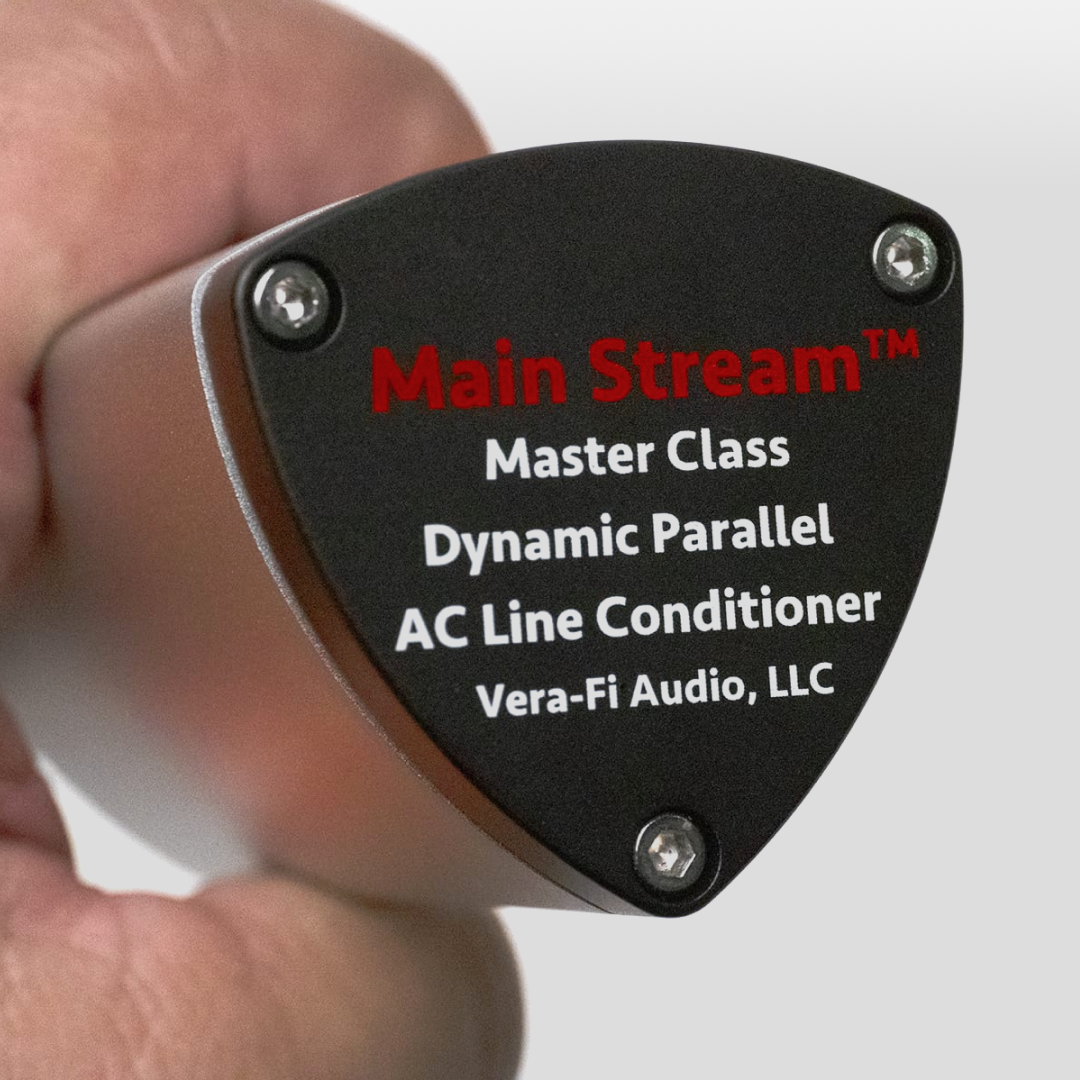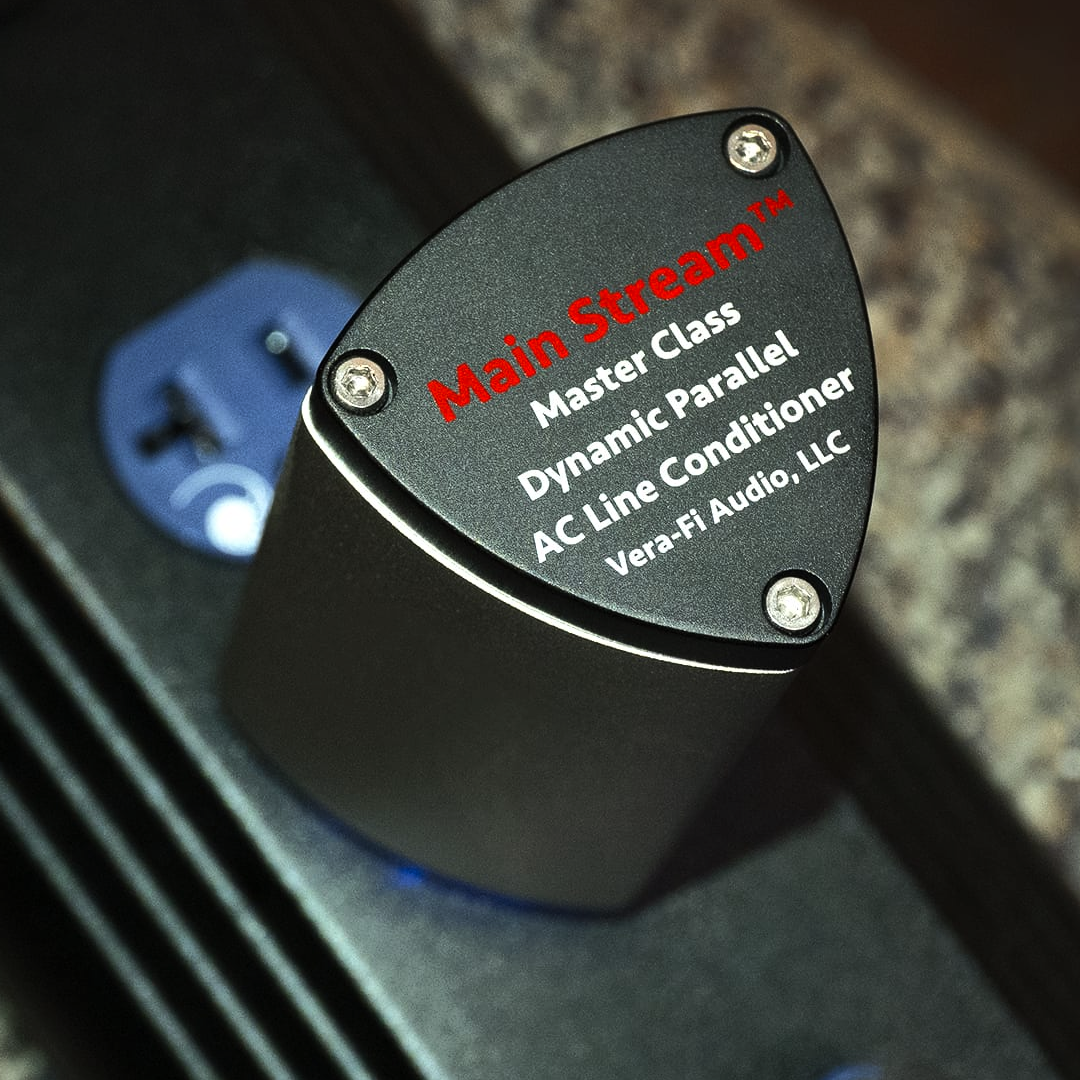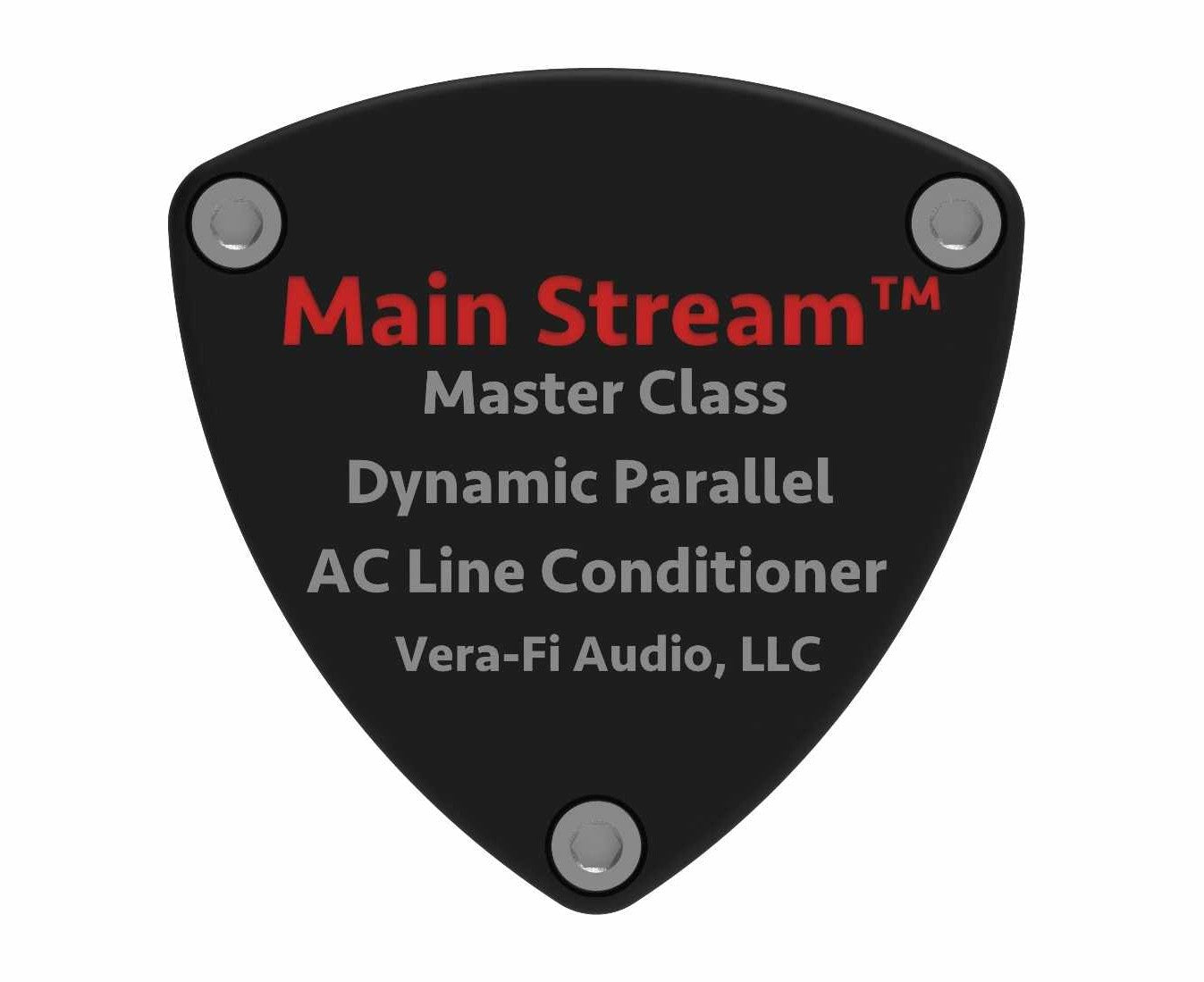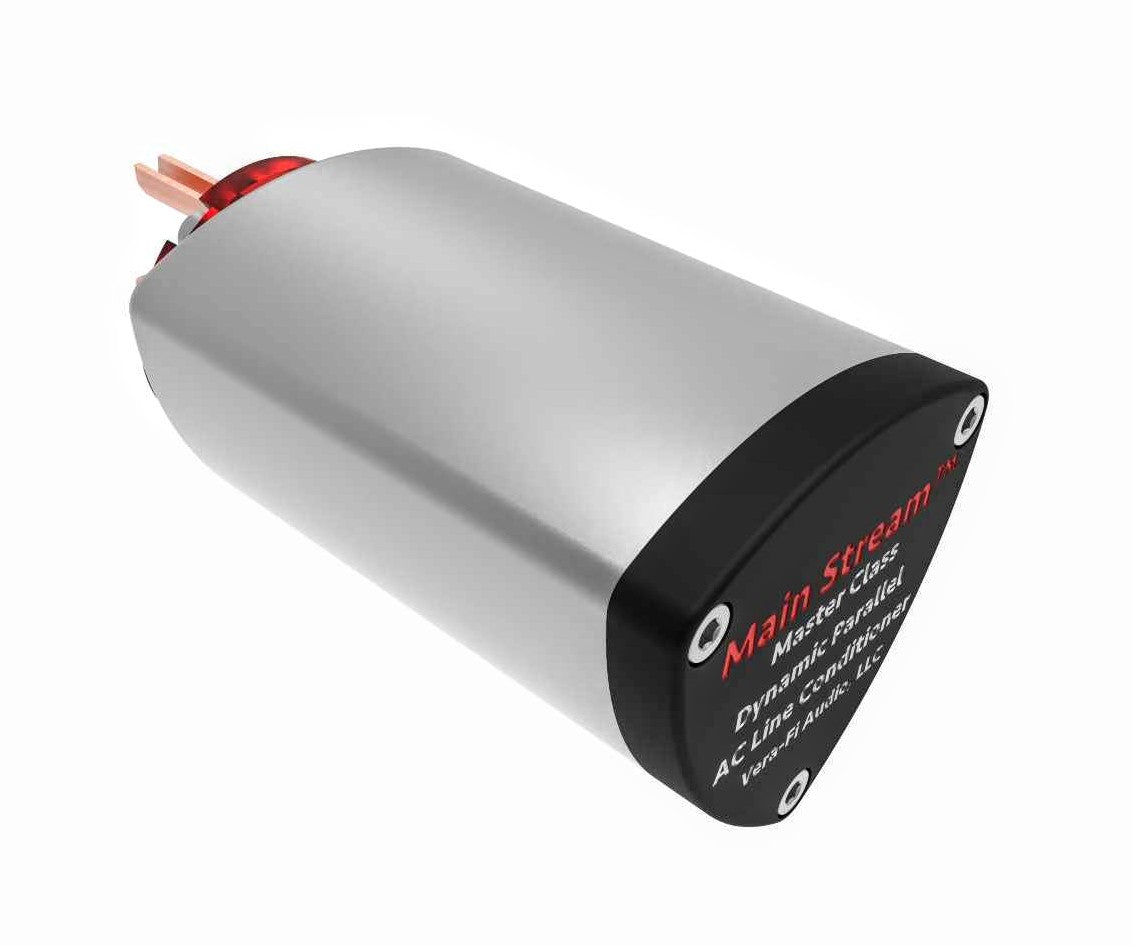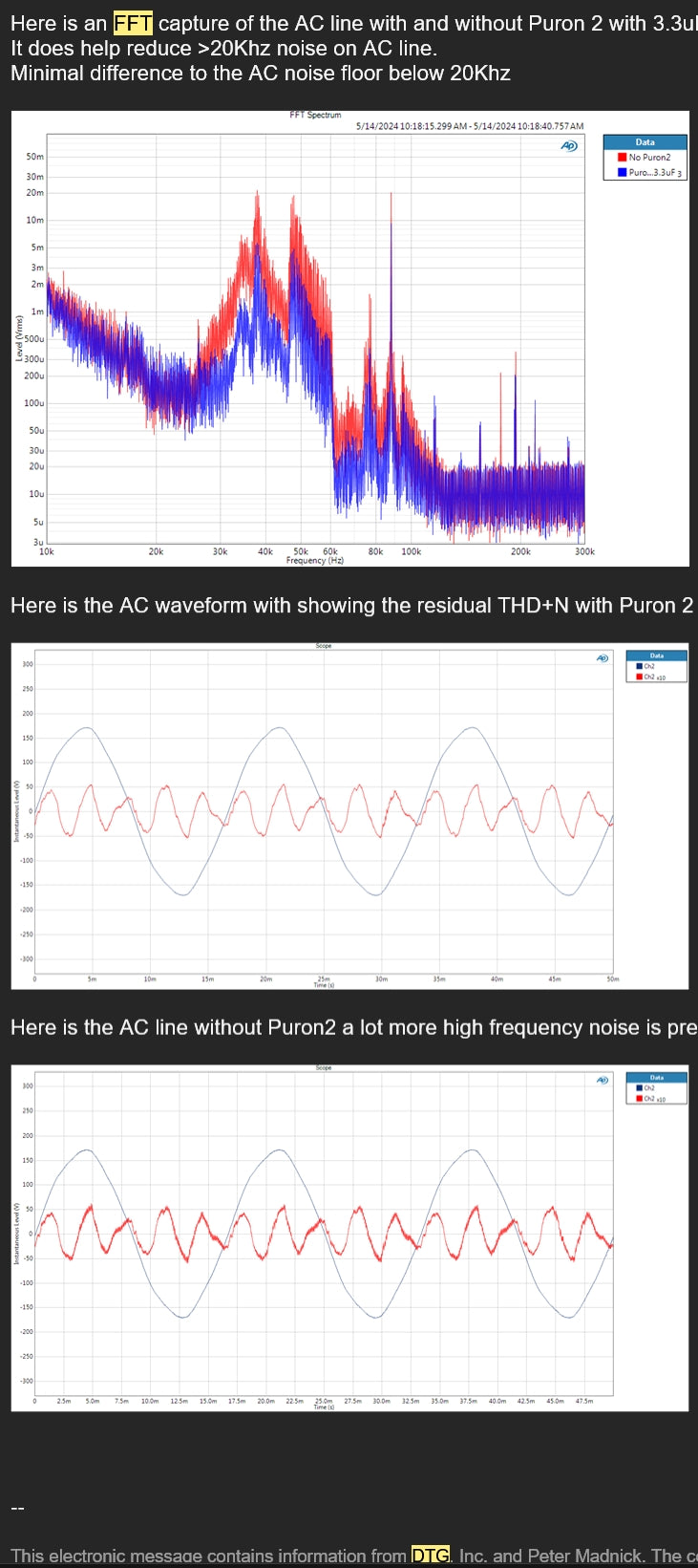Vera-Fi Audio LLC
Main Stream - Master Class Dynamic Parallel AC Line Conditioner
Main Stream - Master Class Dynamic Parallel AC Line Conditioner
Couldn't load pickup availability
Product Description
Product Description
Now Shipping!
Note: Shipping times for Main Stream can take 5 to 7 days.
Master Class Dynamic Parallel AC Line Conditioner
Main Stream is designed to improve the performance of your high-end audio or video system by reducing the amount of AC Mains-based interference travelling on the wires within your home. This interference is created not only by other components in the system, but also appliances and other electrical equipment elsewhere in the house. Sometimes even emanating from outside your home!
Of course, this interference is mostly in the RF range, but things like refrigerators, air conditioners and heaters, washers and dryers; anything with a big motor and put a pulse of energy onty your home AC line and it will be "felt" by other equipment within the home. The energy imposed on the line is absorbed or filtered in different ways, depending on the frequency band involved. Part of Mainstream's effectiveness is due to the multiple frequency bands it effects while utilizing a simple topology comprising a minimum number of parts.
Line interference can cause many undesirable effects; hum, hiss, hash, or buzzing sounds from your speakers, a slight vibration that can be felt through the chassis of your components or on the motor of your turntable, and on video displays as random lines, moving bars or fuzzy images.
These effects can be experienced individually or in combinations. It is interesting to note that oftentimes the effect (hum, for instance) is apparently reduced, but our bands of interest do not include these very low frequencies. We are reducing energy in a band that infers these types of noise reductions.
Main Stream is called a “parallel” line conditioner because you do not plug your component INTO it, but rather plug it into the Mains socket closest to the component. In this way the MainStream is never restricting the flow of current to your components, simply removing the interference it encounters on the line as the current flows by. And there is no limit to how many MainStreams you can use; a large system may best be served by several.
As you probably know, the other type of line conditioning is called "series". There are many (maybe most?) products out there which plug into the wall and then your component(s) plug into it. With these, the current must pass through the various filter parts on their way to your audio component, necessitating the internal parts being of both high enough voltage and current to support the power demands of the attached product(s). This makes these conditioners both larger and more expensive than a parallel type, and they are often designed to serve somewhat different needs, or sometimes one of just distribution and surge protection.
Mainstream uses a combination of reactive elements to create tuned filters designed to specifically reduce the levels of noise specifically known to interfere with your audio enjoyment. Our topology excludes the use of any type of resonant transformer as a wave shaping device, and rather only removes unwanted frequencies.
• Capable of reducing system background noise to vanishingly low levels.
• Reasonably priced,
• Milled extruded aluminum case
• Designed for a long life of continuous service
• A faint blue glow shows it is working
• Laboratory tests prove the effectiveness of MainStream via Fast Fourier Transform graphs
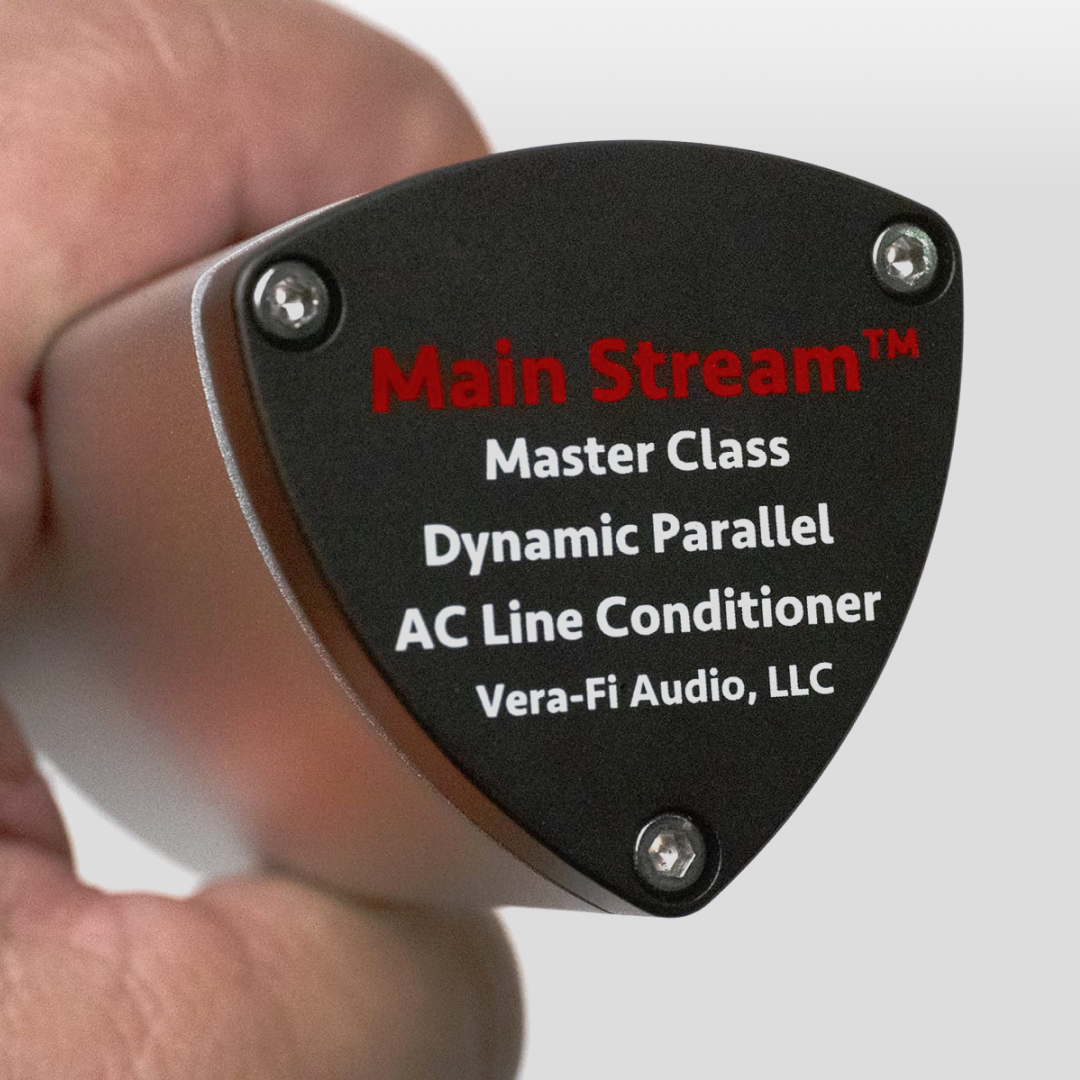
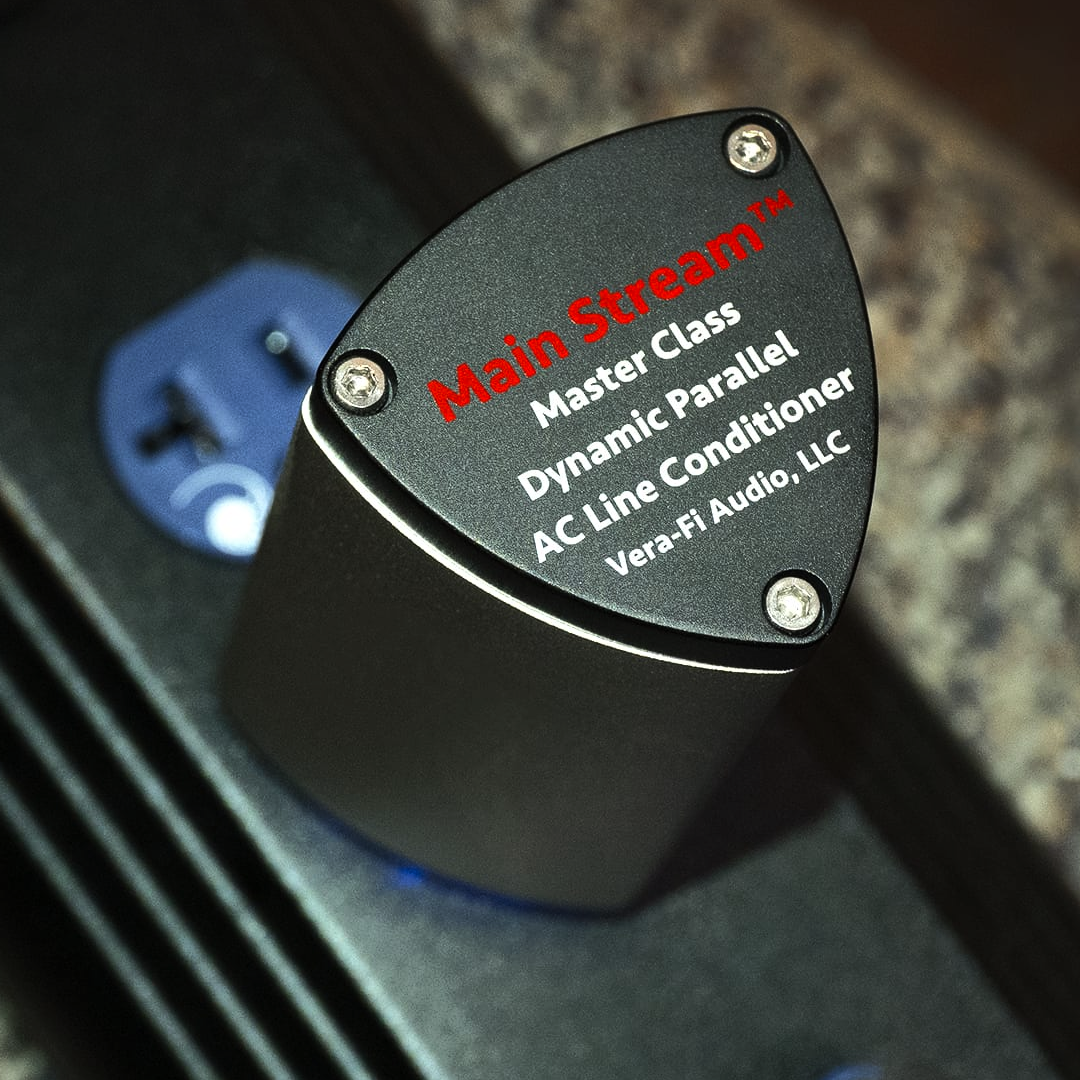
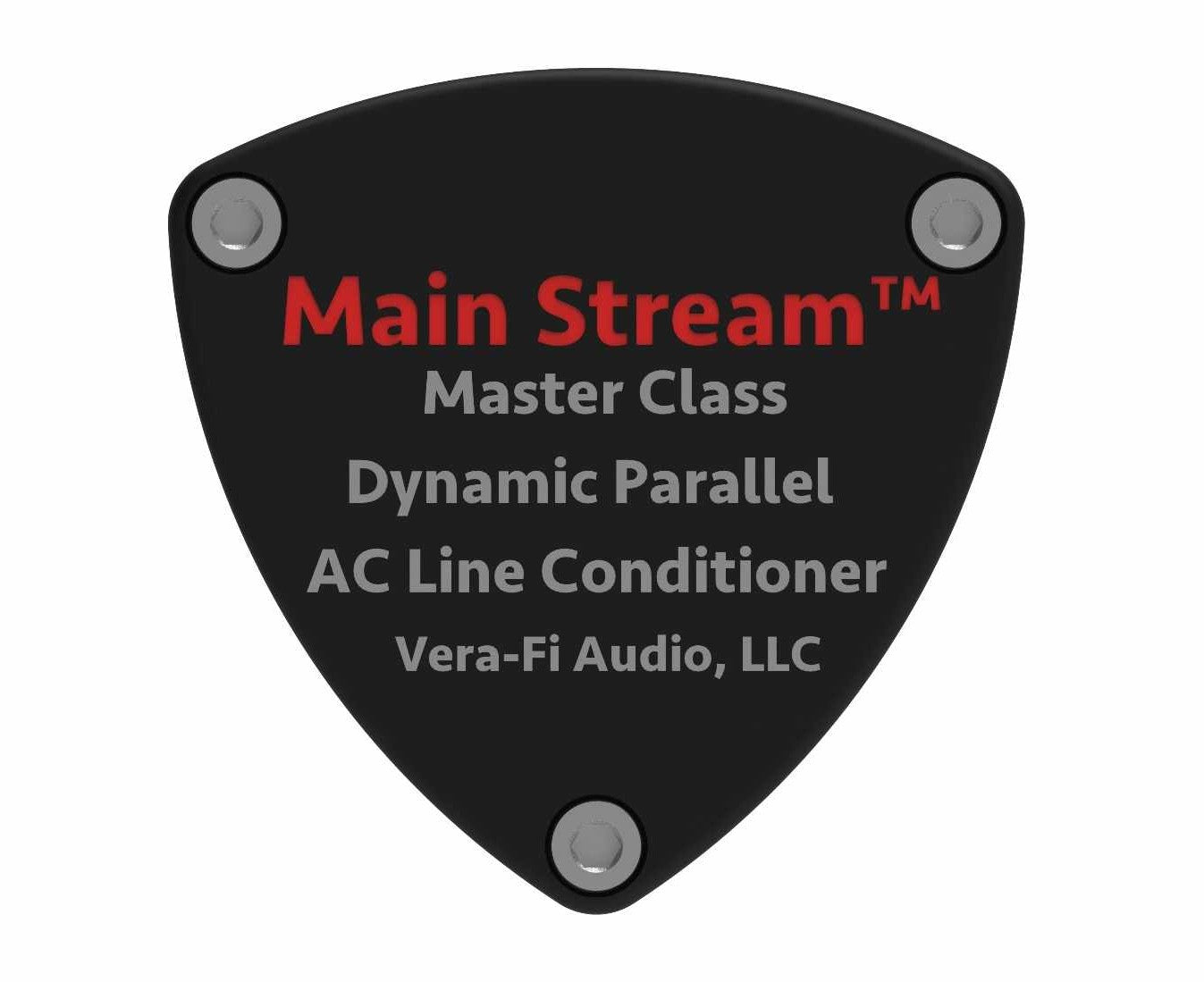
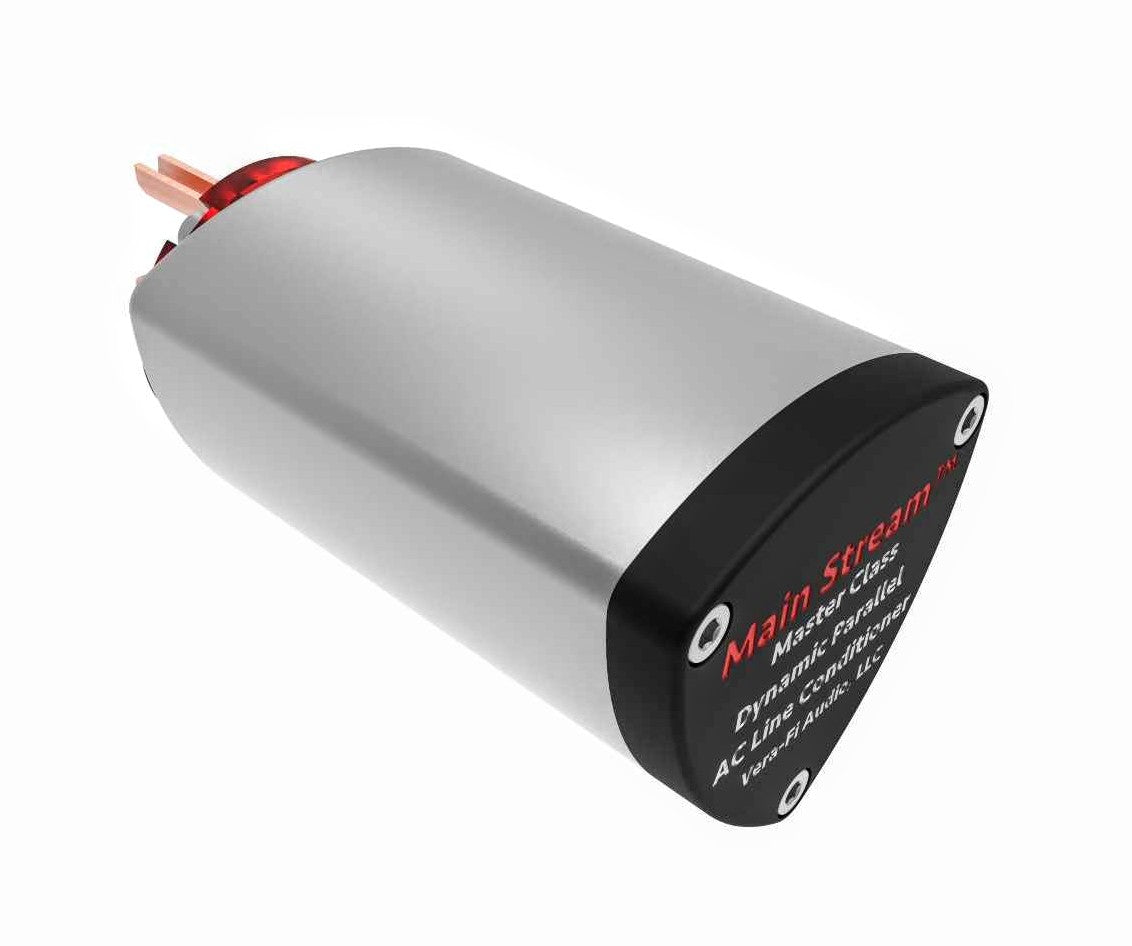
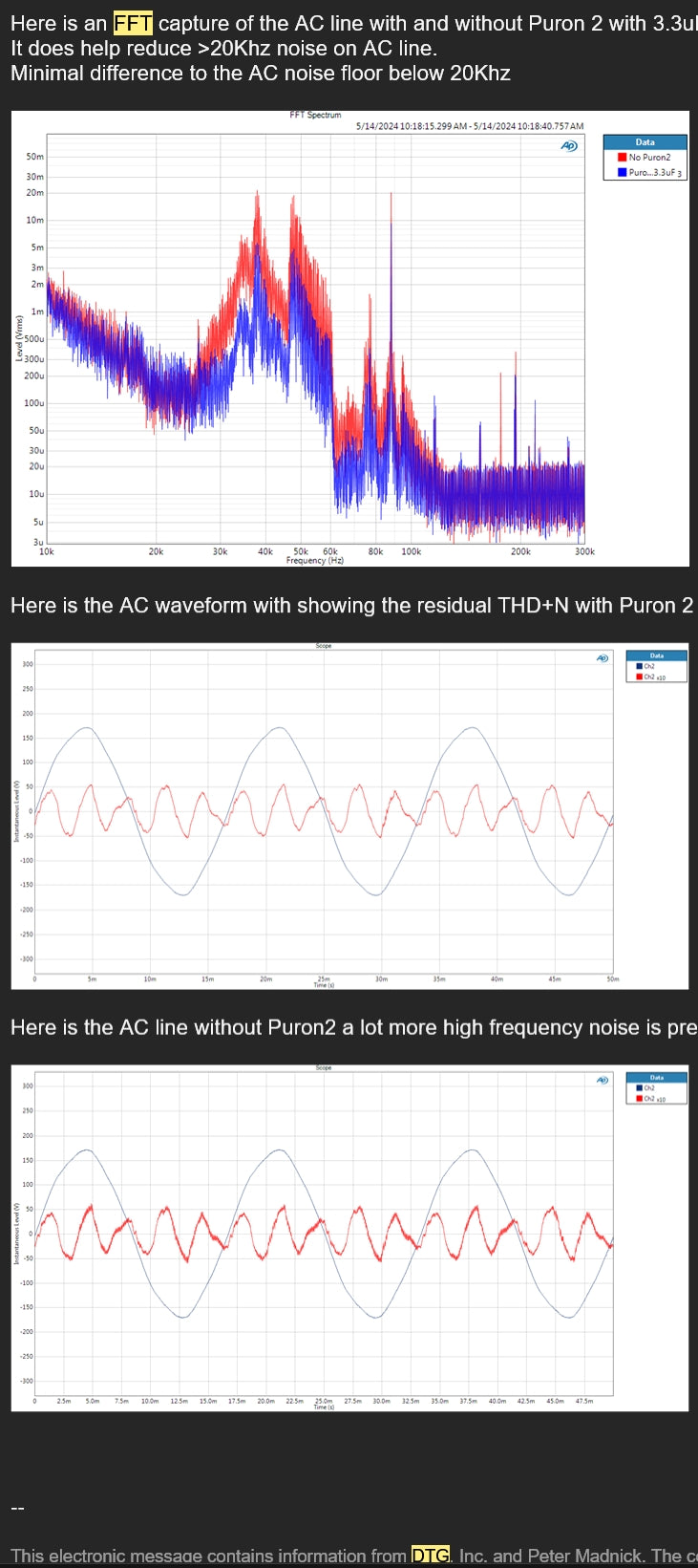
Lower noise floor, more detail and texture, better soundstage.
I first tried the Snubway and Mainstream in my main system. Unfortunately, I have no spare outlets, so I used regular double adapters to attach the Subway and Mainstream. After some experimentation, I realised that the cheap double adapters were degrading the sound dramatically, so this implementation was abandoned.
I then added the Snubway and Mainstream to the outlet and power board in the Modem/Router room.
Here I much more success, and although the improvements were subtle, they were clearly audible. The sound became calmer and less edgy, the treble a little smoother and the soundstage being slightly more fleshed out with added solidity and body.
I have now ordered a second subway and an infinity fuse. Thanks to Mark and the Vera-fi team for an affordable and effective range of audio tools.
I have mine for a week or so; I have more on order, including the Snubway. But just this one unit has made an impact for the positive, so I am hoping to build on this. It is outlet d, and depending on which outlet it is plugged into, the results can vary, depending on the outlet position in the room. I put my in the Garage by the 1st AC outlet n to the fuse box after reading on that would be a good place for one unit, and they were right, right away the TV Sound bar and the 3 subwoofers connect sounded more dynamic, and the sound was more natural and with more body, what surprised me was on the 2nd level where my Stereo is it made a positive impact there also, I went down and unplugged it and went up and listened again and there was a drop off in presence, body and weight to the music as well as lacking the detail, piano is what I used with a stand up bass, to keep it simple, all sound more real with the one unit plugged into the outlet by the fuse box, so one is staying when I get the others I will built from there and see the extra ones impact, Mark is going to send me a package that he feels will work best for my system, Mark been great even took the time to call me to answer some questions on his products and which would be best for my needs. So try different outlets, let the unit burn-in for a week or so, the only time it hurt the sound was when I put it in the outlet before the Core balanced line conditioner; those two did not play nice together at all, lost mid-bass and bass, sound was thin, but that was the only time, I will try a Snubway there when I receive it. A good product, give it a try.
Made a huge improvement in my system.
I purchased the duo and initially had to wait around three weeks for delivery due to component supply issues in their warehouse
Notwithstanding, Mark went out of his way to keep me informed of progress all the way until they arrived on my door step in Adelaide Australia
I plugged the Snubway into the wall socket and the Mainstream into the first socket on my power board - both have been working for just over a week now but I have not yet finished installing my hi-fi system so can’t comment at this stage regarding that However, my flat screen TV is on that board and I have noticed a significant improvement in the sound quality now that the units have had a chance to “burn in”
Once I’ve finished the hi-fi installation I will report again on how it goes
In the meantime I really must commend Mark for his top line service and attention to my needs
The many 5 star reviews are well deserved given my experience so far
There are two dedicated lines supplying power to my stereo. Each line has a Core Technologies power conditioner. I added a Main Stream to one line and a Snubway to the other. After two weeks of burn -in I can say with confidence that the results are positive and pronounced. There is more space around instruments and voices. The sound stage is deeper and wider. Most importantly to me is the entire presentation is more clear and focused. Best $600 I've spent on this rig!
Improvements were immediately noticeable. I haven't paid enough attention to whether they improved further in time.
What the mainstream did: a feeling of more power behind everything, especially noticeable in the bass and impact of drums. It feels correct and better, not just different, and the improvement is pretty significant.
What the snubway did: a more subtle improvement. First thing I noticed is a more accurate location of sounds. In general there's more subtle detail.
For context, I do have a computer with a switching power supply on the same group that I use to play music. Other than that it's only audio devices with lineair power supplies. I use the snubway to protect those, and use the mainstream for everthing. I did a few tests with positioning and this seems to work best. Mainstream: directly in a wall socket. Snubway: in the power distributor for audio devices.
I’ve had unit installed about 4 weeks now and really happy.
They are as effective in lowering noise and revealing detail as the many I have tried in the past. However, they are making a little additional magic that no other plug-ins could provide. Music flows with ease and smoothness, but it is more than that. The PRaT was at its best playing from all my sources, and the music became more engaging. I also noticed the soundstage and instrument separation turned better and became more believable.
Didn't think the Main Stream would make a positive difference since I live in the boonies, with no neighbors. My home has a dedicated transformer on the utility pole. I was wrong. The Main Stream improved detail and the instruments have more color. Thankfully it doesn't decrease dynamics. Highly recommended.
Main Stream Reviews on YouTube

Audio Pursuit
Audio Pursuit gives Main Stream the Tesla award alongside SnubWay

TONE Audio
Vera-Fi Main Stream Quick Overview

Audio Pursuit
Budget-Friendly Power Conditioners: Snubway & Main Stream
Articles about Main Stream

Positive Feedback
Tom Gibbs awards Main Stream and SnubWay for 2024 Writers' Choice Award

Headphone Guru
Main Stream wins 2024 Accessory of the Year awarded by Headphone Guru
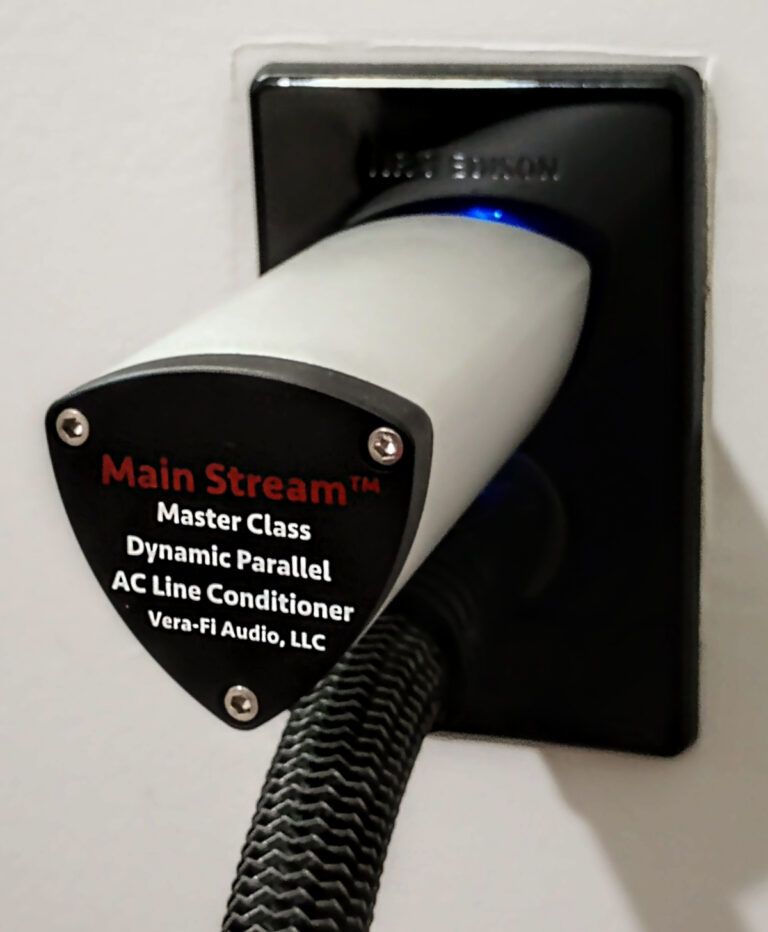
Positive Feedback
Main Stream provide the kind of overall improvements you'd expect to pay through the nose for.
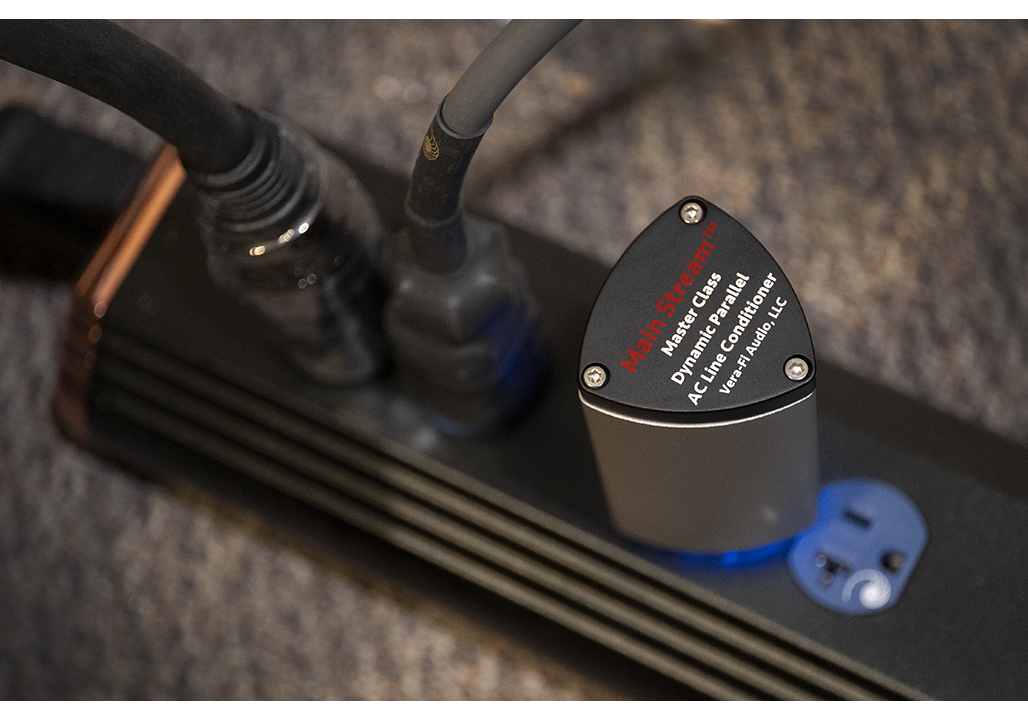
Tone Publications
The Main Stream will make a similar contribution to your system just like fine-tuning your speakers for optimum placement and turntable setup.
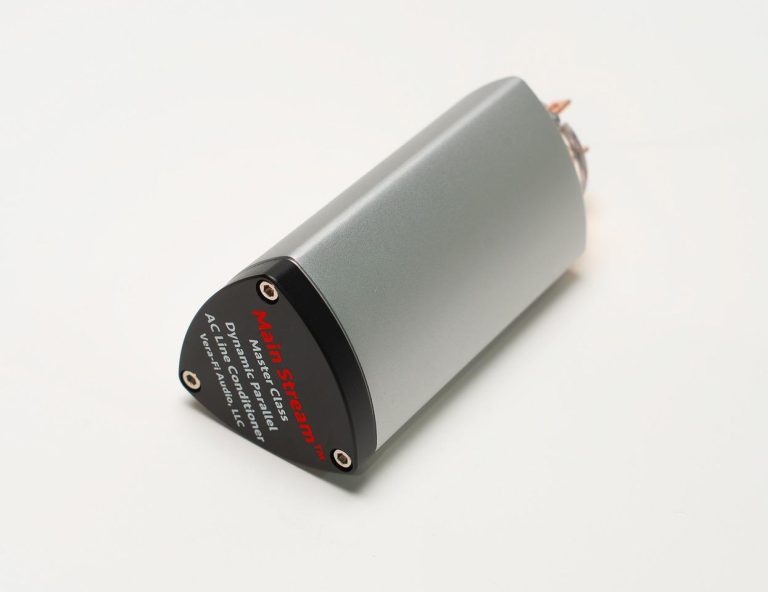
Stereo Times
The Main Stream brought me ever closer to the music while providing a more nuanced performance.
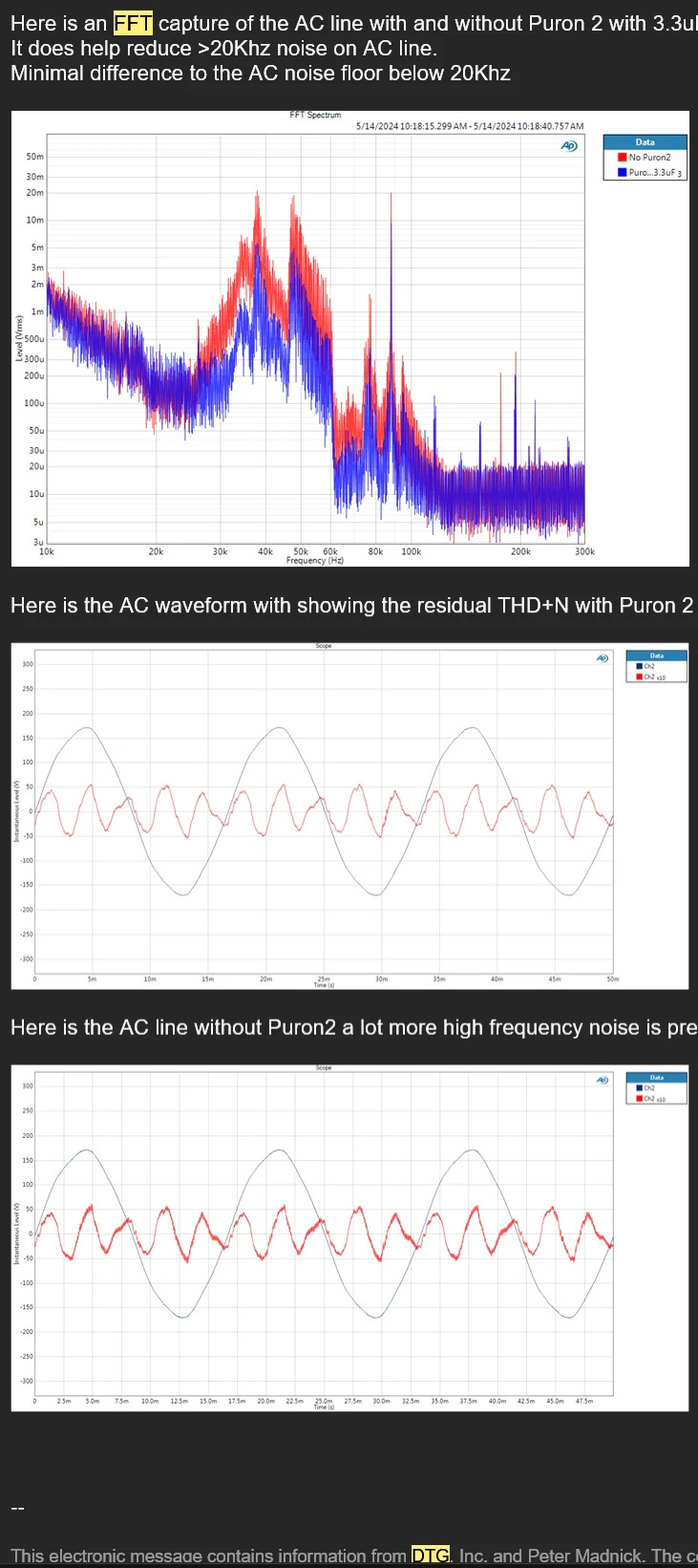
Headphone Guru
The Main Stream is an incredible value and an extremely simple way to improve your audio system without introducing any negative effects.
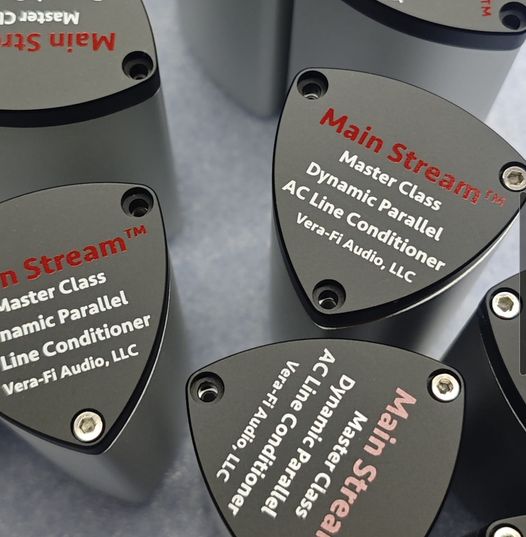
Audiogon Forums
I can’t think of any other product that improves recorded music as dramatically as Main Stream.

Positive Feedback
Main Stream has worked wonders in my all-analog system.
Frequently Asked Questions (FAQs)
What does the Main Stream Master Class Dynamic Parallel AC Line Conditioner do?
The Main Stream reduces a broad spectrum of AC noise, allowing your system to achieve ultimate performance.
How is the Main Stream different from other power conditioners?
The Main Stream is a plug-in filter that increases the blackness of one's audio system, enhancing sound quality without introducing any negative effects. It concentrates its effects mostly between 10kHz and 20kHz where problems with AC Mains tend to show themselves.
Is the Main Stream easy to install?
Yes, simply plug the Main Stream into an outlet on the same circuit as your audio equipment. Main Stream is fine in Power Conditioners as well. Main Stream is also a parallel type filter so can be plugged into any available free power socket in your system.
Can I use the Main Stream with other power conditioning devices?
Yes, it can be used alongside other power conditioning devices like SnubWay or other products like Puron etc.
What kind of improvements can I expect in my audio system?
Experts and users have reported a darker background, revealing more detail and ambient cues, expanded soundstage, and tighter, deeper bass.
Where can I find Vera-Fi Audio warranty information?
You may find information about warranty here.
Follow Us!
Subscribe to our mailing list for insider news, product launches, and more.
- Choosing a selection results in a full page refresh.
- Opens in a new window.
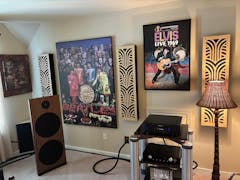
I have mine for a week or so; I have more on order, including the Snubway. But just this one unit has made an impact for the positive, so I am hoping to build on this. It is outlet d, and depending on which outlet it is plugged into, the results can vary, depending on the outlet position in the room. I put my in the Garage by the 1st AC outlet n to the fuse box after reading on that would be a good place for one unit, and they were right, right away the TV Sound bar and the 3 subwoofers connect sounded more dynamic, and the sound was more natural and with more body, what surprised me was on the 2nd level where my Stereo is it made a positive impact there also, I went down and unplugged it and went up and listened again and there was a drop off in presence, body and weight to the music as well as lacking the detail, piano is what I used with a stand up bass, to keep it simple, all sound more real with the one unit plugged into the outlet by the fuse box, so one is staying when I get the others I will built from there and see the extra ones impact, Mark is going to send me a package that he feels will work best for my system, Mark been great even took the time to call me to answer some questions on his products and which would be best for my needs. So try different outlets, let the unit burn-in for a week or so, the only time it hurt the sound was when I put it in the outlet before the Core balanced line conditioner; those two did not play nice together at all, lost mid-bass and bass, sound was thin, but that was the only time, I will try a Snubway there when I receive it. A good product, give it a try.
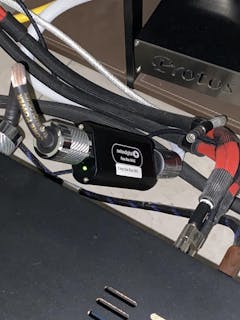
Really good uplift in soundstage, tonality and dynamics! No doubt about it or placebo!
The sound feels more pure!
At around 300 hrs like clarified by mark , the effect becomes very obvious!
I will probably go one for amp and one for streamer .
Bravo!
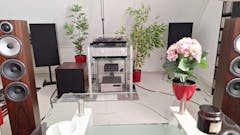
I've recently replaced my B&W 705 S2 standmount and B&W ASW608 sub by a new B&W 704 S3 floorstander. Incredibly good speakers, especially considering the price. The dual woofers reach down to 48Hz, but I still missed that last octave. I was looking for a suitable REL sub but after seeing so many good reviews about the Vanguard Caldera 12" Active Subwoofer I decided to give it a try. I thought it would be difficult to get one in the Netherlands. However thanks to Ace from Vera-Fi, he managed to do that; my sub arrived on location in 11 days. The price-performance ratio is out of this world. I thank Ace for all his efforts and Vera-Fi for an incredible deal.
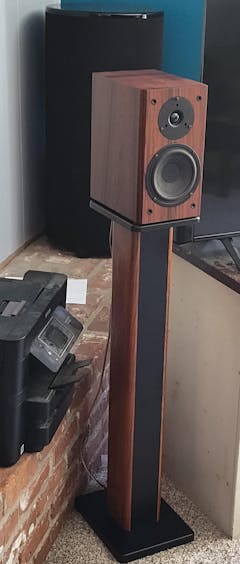
I bought these because I have been in love with Rosewood veneer since I first saw it as an extra cost option for some $5000 speakers in the '90s. Never expected to be able to afford a pair of Rosewood veneered speakers, but then found these for under $300. I pulled the trigger, ASAP.
When they arrived, I gave them >50 hours of 85dB in room playback of the radio with them facing each other under a comforter and wired out of phase to damp down the noise. After this, I gave them a listen. Beautiful, and they sound spectacular for their price point. I felt like I won the lottery; a scratcher, not the PowerBall, but still :) I was used to a bookshelf pair w/ lite mid-bass response and slightly "crisp" highs, and these (in direct comparison) had excellent mid-bass response and are just a bit laid-back in the very highest registers to my ears. I use them with a 500-watt RMS ported 12" subwoofer crossed over at 100Hz and get good output from them with an 80-watt per channel RMS amp. Like easy, no strain, >90dB at the listening position 12' away kind of "good output". For movies, tv, and music. Plenty for me.
If you like beautiful speakers, good sound (though not detail monsters like the AMT-tweeter based speakers I have in the bedroom), and spectacular value don't be afraid to pull the trigger on these Vanguard Scouts. Just please don't expect "giant killing" sound quality for under $300, and I promise you'll be happy with your purchase.
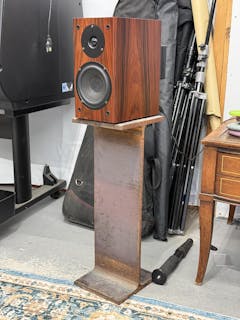
I’ve never had good speakers to listen to music on, so this was a big leap for me. I bought the Vera link combo and the 10” caldera to go with them. Mark has answered every question of mine personally and he advised that I connect the vera-link to the high pass input and then out put with some cables to the speaker and it works like a charm! Even though I am listening to music through my bluetooth on my iPhone, it sounds absolutely amazing!!

Excellent built quality, a ported sub that sounds closer to sealed sub and for only 348 euros? Insane but true, the Caldera 12 will sound just as good in my room for music or home theater, i cant recommend this sub enough! Go dual for bombastic room filling low notes imo. The only gripe i have is the auto on off which turns the sub off after only 10 seconds, i would recommend at least 1+ minute of inactivity to turn off so lets hope they boys in the lab will sort this out on the next batches! Excellent job Vera Fi team!

"First, I'd like to thank **Mr. Ace**. He was a great help with the delivery.
The **SnubWay - Noise Defender** has enhanced the audio system. A new level of sophistication has been added to the system, which was previously a straightforward 'Main Stream' setup.
Firstly, I feel like the **soundstage is wider**.
And I feel like it has captured the **subtle vibrations and noise**.
Frankly, I had been briefly tempted by Chinese-made products due to their price advantage.
However, **vera-fi-audiollc** clearly demonstrated the **technical gap** between those products and this one.
Thank you."

This is my first Hi-fi set of speakers I have ever bought. Before this, I listened to BOSE speakers.
WOW.... what an upgrade these Vanguard scout speakers are!!
I had to wait a couple months to get my order (because of tariffs), but Mark and his team were really amazing at answering all of my questions and updating me with the progress of my order.
I ordered the Caldera 10 sub, vera-link amps, and the scouts and Mark helped me to understand how to plug the vera-links bluetooth amps into the subwoofer through the high-pass input and output through the high-pass directly to the right scout speaker and it works like a charm! I couldn't be happier!
You will see two pics in my review of the back of the right vanguard scout speaker, because I wanted to show you that if you have to peel the velcro off of your speaker and place it elsewhere, it doesn't leave any residue to clean up! It's not a huge deal, but it certainly made my life easier.
I am a fan for life and will be ordering some of the new things they are working on in the future!

I purchased three Caldera 10's to go with my three pairs of Scouts. I love them, so I purchased 4 more to get small rooms 2.1 & large rooms a 2.2. I love speaker systems but I haven't had a good set up for years. I looked into this for months. I didn't know what my sound system was missing till I got the lower end filled in.

Great speakers, right in my budget. I purchased one pair, broke them in, loved them, and then purchased 2 more pairs. I had the option of ceiling speakers but bookshelf sound so much better. The Scouts allowed me to get great sound and budget. I have them in several rooms now. 2.2 in the main rooms and 2.1 in the small rooms. When connecting a Caldera 10 it was suggested to put a HPF 70h on the Scouts. I haven’t been able to find a good low cost 70h, closest so far is 80h $25. I purchased (3) pairs of Scouts and (7) Caldera 10. So HPF is important to focus more on the mid and high’s. Really really like Vera-Fi Scouts and Caldera’s!!!

